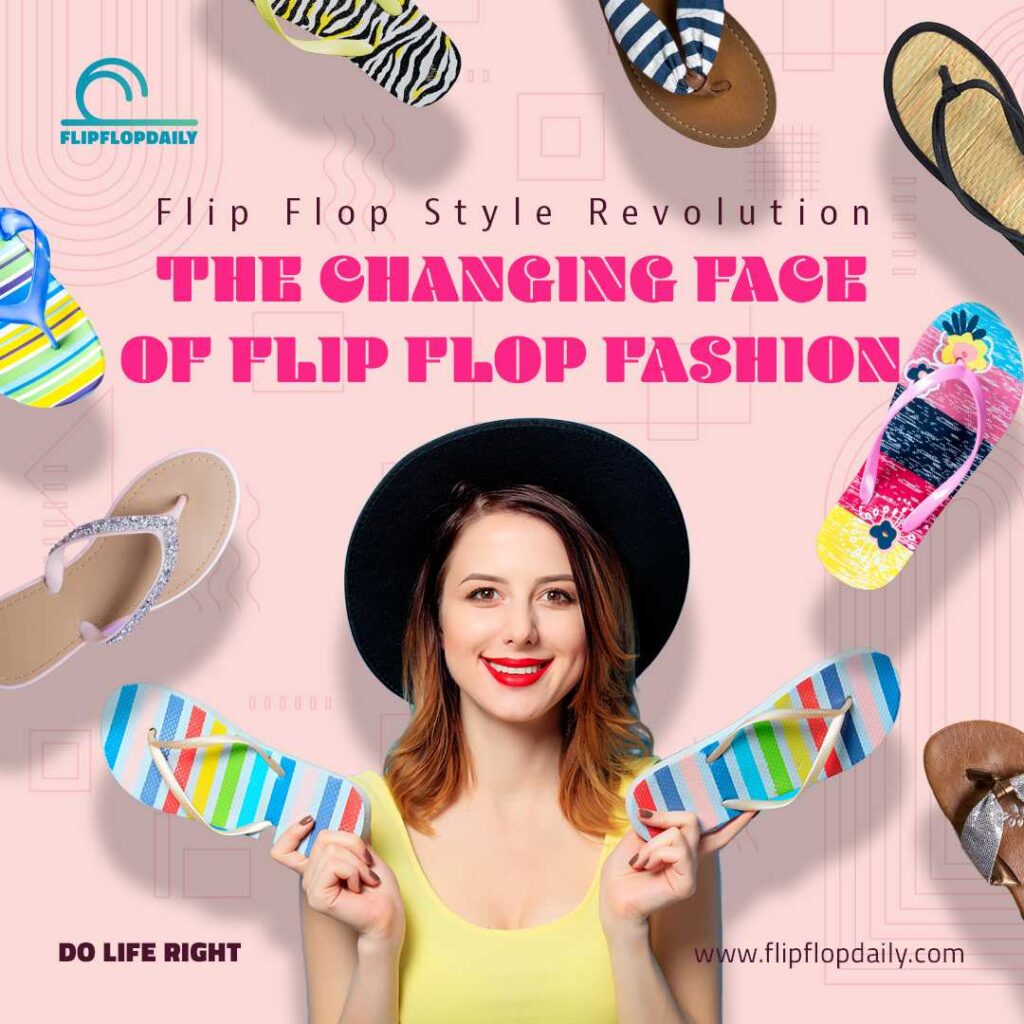Flip flops have long been celebrated as the ultimate expression of laid-back style. Traditionally seen as beachwear, they’ve emerged in recent decades as one of the most controversial urban trends, navigating a path from ancient necessity to high-fashion statement. As designers embrace them for their minimalist aesthetic and effortless comfort, flip flops are taking on a new life in the worlds of fashion and pop culture. Welcome to the flip flop revolution!
Ancient Origins to Modern Obsession
The flip flop’s journey begins with ancient civilizations. Egyptian pharaohs donned sandals made of papyrus and palm leaves as early as 3100 BC. For Egyptian royalty like Pharaoh Tutankhamun, flip flops weren’t just shoes; they were symbols of status, with intricate designs often featuring enemies on the soles—so the pharaoh could metaphorically “crush” them with each step. Meanwhile, across the world in Japan, the zōri sandals (made from rice straw) became integral to Japanese culture and inspired a host of later styles.
Flip flops as we know them today gained global recognition post-WWII when American soldiers returned home with Japanese zōri sandals. Their minimalist design, inexpensive materials, and casual appeal made them popular, leading to the birth of modern flip flops in various cultures, from American beaches to Brazilian street markets. In the 1960s, Brazilian brand Havaianas launched its rubber flip flop design, sparking a new era in flip flop fashion.
The Flip flop in High Fashion: Breaking Boundaries
Though flip flops initially met resistance in the high-fashion world, their appeal grew as designers began exploring them as symbols of rebellion, minimalism, and individuality. The 90s marked a pivotal point. In 1993, Jil Sander showcased a model wearing flip flops on the runway, pairing them with a metallic dress. This minimalist aesthetic struck a chord, as flip flops were positioned against the era’s more maximalist trends, creating an unexpected, stripped-back elegance.
The decade’s iconic designers like Calvin Klein also embraced the trend. In his 1997 Spring/Summer collection, he introduced platform flip flops, pairing them with visible lingerie and slip dresses, redefining the footwear’s image from purely practical to provocatively stylish. By 1999, Jean Paul Gaultier had fully integrated flip flops into the runway, presenting them with a heel and elevating their status in high fashion.
These daring choices were soon echoed on the red carpet. Celebrities such as Gwen Stefani and Gwyneth Paltrow rocked flip flops at prestigious events, adding to the controversy and intrigue. The “dress down to level up” philosophy allowed wearers to express both sophistication and rebellion—an ethos that still resonates.
Pop Culture Moments: From Red Carpet to Reality
Flip flops became a pop culture staple in the 2000s, cementing their place in casual and celebrity fashion. From Kim Cattrall in Sex and the City to Paris Hilton and Kim Kardashian pairing flip flops with iconic Y2K velour tracksuits, this unassuming footwear was everywhere.
Yet, flip flops remained divisive. When Northwestern University’s women’s lacrosse team wore flip flops to the White House in 2005, it became a media spectacle. Some considered the choice too casual, while others saw it as a relatable expression of modern youth culture. The incident underscored flip flops’ role as a symbol of the ongoing tension between formality and comfort in fashion.
Designer Collaborations and High-Fashion Comebacks
Today, flip flops are riding a new wave of popularity thanks to nostalgic revivals of Y2K fashion and innovative designer collaborations. Havaianas, which has continued to evolve with the times, recently teamed up with Dolce & Gabbana for a bold, Sicilian-inspired collection. Featuring leopard prints and Mediterranean motifs, these luxurious flip flops reflect the continued influence of streetwear in high fashion.
This trend isn’t limited to one-off collaborations. Brands like Saint Laurent and Miu Miu have released chic, high-end versions of flip flops, including styles with leather straps and delicate detailing. At the Burberry Spring/Summer 2023 show, models walked the runway in flip flops paired with velvet gowns, proving that this simple footwear could make a sophisticated statement in even the most glamorous contexts.
The Flip flop Renaissance: Style Versatility for All
The fashion world’s embrace of flip flops highlights a broader shift toward relaxed, versatile styles. The Row, Gabriela Hearst, and Khaite have all showcased flip flops as part of their collections, pairing them with evening gowns and opera gloves, or with sharp tailoring for a surprising blend of high-low fashion.
A key factor in this flip flop renaissance is the continued demand for comfort in fashion. The COVID-19 pandemic intensified this trend, pushing designers to create chic yet comfortable alternatives. Platforms, kitten heels, and even square-toed flip flops have surged in popularity, with searches for these styles increasing by 255% and 700%, respectively. Luxury fashion now prioritizes the comfort once reserved for beachwear, translating it into bold runway statements.
Embracing the Flip flop Lifestyle
In its modern form, the flip flop is more than footwear; it’s a lifestyle. At Flip Flop Daily, we believe that life is better in flip flops, whether you’re exploring urban jungles or relaxing at the beach. Flip flops embody freedom, minimalism, and a playful confidence that resonates with people worldwide.
From their ancient origins to contemporary fashion statements, flip flops represent a bold spirit and effortless style. So, as designers continue to push the boundaries of this timeless shoe, we can look forward to seeing where the flip flop revolution leads. After all, the best journeys are taken with relaxed feet and open minds.
It’s time to Do Life Right!
Check out the best flip flop reviews, flip flop advice and flip flop philosophy on how to live a flip flop life!

